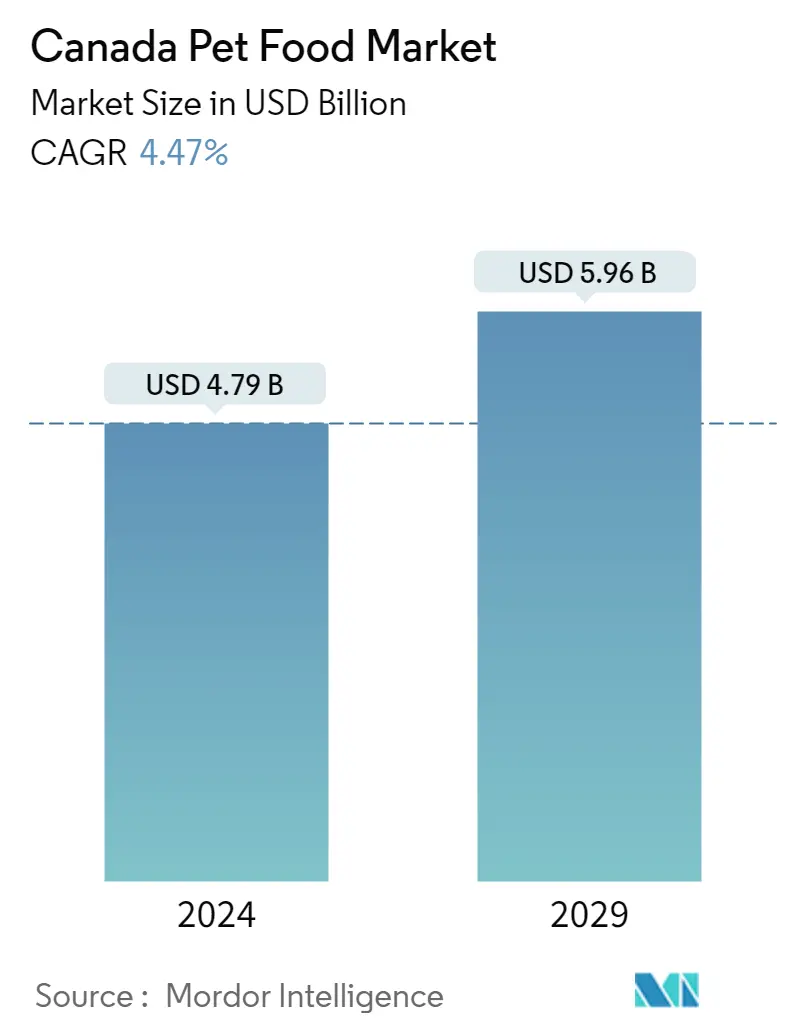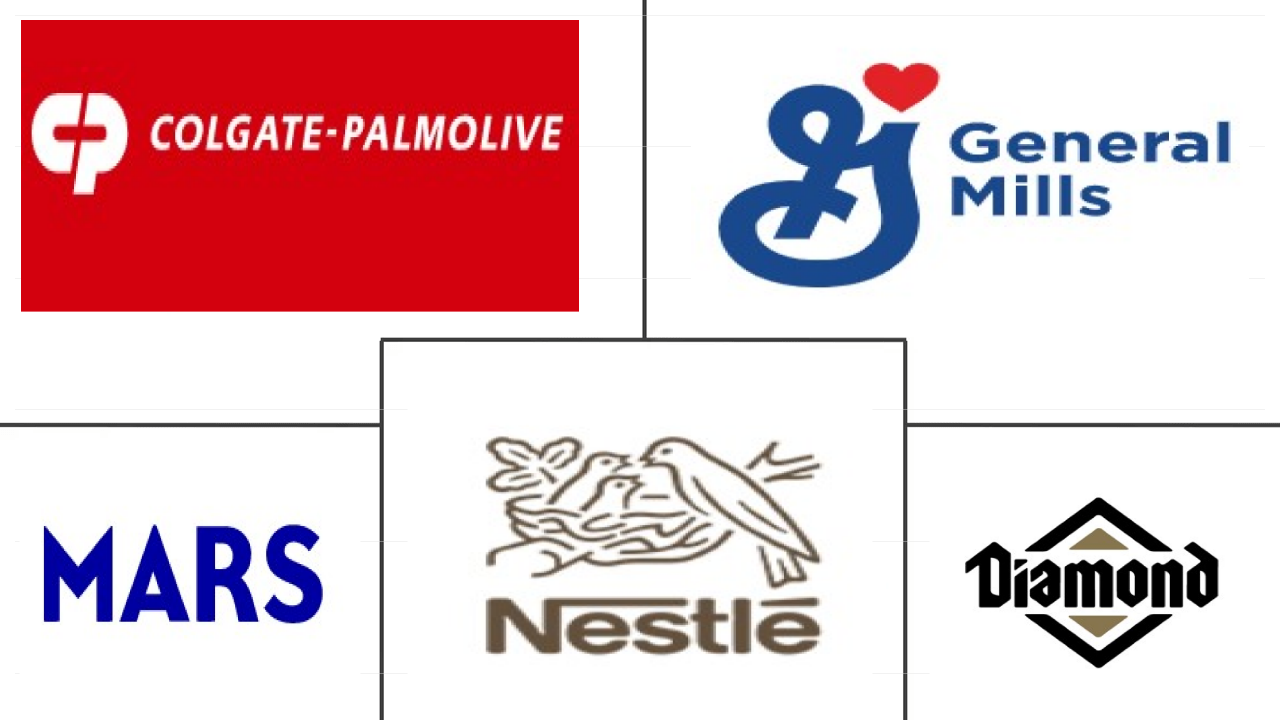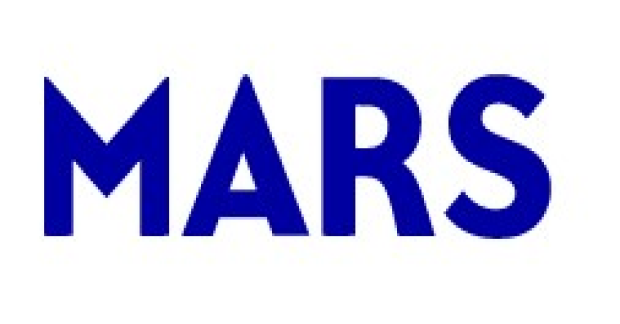Market Size of canada pet food Industry

|
|
Study Period | 2017 - 2029 |
|
|
Market Size (2024) | USD 4.79 Billion |
|
|
Market Size (2029) | USD 5.96 Billion |
|
|
Largest Share by Pets | Dogs |
|
|
CAGR (2024 - 2029) | 4.47 % |
|
|
Fastest Growing by Pets | Dogs |
Major Players |
||

|
||
|
*Disclaimer: Major Players sorted in no particular order |
Canada Pet Food Market Analysis
The Canada Pet Food Market size is estimated at USD 4.79 billion in 2024, and is expected to reach USD 5.96 billion by 2029, growing at a CAGR of 4.47% during the forecast period (2024-2029).
4.79 Billion
Market Size in 2024 (USD)
5.96 Billion
Market Size in 2029 (USD)
5.30 %
CAGR (2017-2023)
4.47 %
CAGR (2024-2029)
Largest Market by Product
68.51 %
value share, Food, 2022
The rising pet population and increasing consumer demand for high-quality dry and wet pet foods to support their pets' health are the major factors boosting the pet food segment in the country.
Largest Market by Animal
37.01 %
value share, Dogs, 2022
Despite its smaller population compared to cats, dogs are the largest segment due to the high consumption rate and availability of wider dog food options from various brands.
Fastest-growing Market by Product
9.06 %
Projected CAGR, Pet Nutraceuticals/Supplements, 2023-2029
The increasing demand for vitamins and minerals, probiotics, and omega-3 fatty acids and growing awareness about preventive health care with nutraceuticals are increasing the segment's usage.
Fastest-growing Market by Animal
5.58 %
Projected CAGR, Dogs, 2023-2029
The expanding dog ownership rates, increasing consumer disposable income, and the strong demand for high-quality dog foods in the country are driving the segment's growth.
Leading Market Player
22.53 %
market share, Mars Incorporated, 2022

Mars, Incorporated is the market leader due to its many product innovations and recent acquisition strategy, where it acquired Champion Petfoods.
Increasing pet adoption and the demand for premium pet foods are driving the pet food market in the country
- In Canada, pet ownership is highly common, with a significant percentage of households owning pets. As of 2020, 38.0% of households owned cats and 35.0% owned dogs. As a result of this trend, the pet industry in Canada has been on a continuous upward trend, with the market constantly expanding.
- Despite pet dogs having a lower population than cats in Canada, they dominate the pet food market, valued at USD 1.67 billion in 2022. This is due to their higher consumption of commercial food than cats. With the pet population steadily increasing and pet owners becoming more interested in premium pet products such as grain-free and vegan dog food, the pet food market for dogs is anticipated to be the fastest growing, registering a CAGR of 5.5% during the forecast period.
- Cats accounted for about 36.7% of the pet food market in 2022, owing to their large population in the country, which accounted for around 26.3% of the pet population in the same year. The cat food market is anticipated to register a CAGR of 4.0% during the forecast period because of the increase in the cat population. The average lifespan of a cat is about 20 years, which will also have a long-lasting impact on the market.
- Although other pet animals, including birds, fish, and rodents, accounted for 44.5% of the pet population in Canada, they accounted for 26.2% of the market in 2022. This could be attributed to these pets being typically small and, therefore, requiring relatively small amounts of food.
- The increase in pet ownership during the pandemic and the average lifespan of dogs and cats, which is around 8 to 10 years, is expected to have a long-term impact on the pet food market. Additionally, the continuous increase in pet ownership is anticipated to drive the market in the forecast period.
Canada Pet Food Industry Segmentation Canada Pet Food Industry Segmentation
Food, Pet Nutraceuticals/Supplements, Pet Treats, Pet Veterinary Diets are covered as segments by Pet Food Product. Cats, Dogs are covered as segments by Pets. Convenience Stores, Online Channel, Specialty Stores, Supermarkets/Hypermarkets are covered as segments by Distribution Channel.
- In Canada, pet ownership is highly common, with a significant percentage of households owning pets. As of 2020, 38.0% of households owned cats and 35.0% owned dogs. As a result of this trend, the pet industry in Canada has been on a continuous upward trend, with the market constantly expanding.
- Despite pet dogs having a lower population than cats in Canada, they dominate the pet food market, valued at USD 1.67 billion in 2022. This is due to their higher consumption of commercial food than cats. With the pet population steadily increasing and pet owners becoming more interested in premium pet products such as grain-free and vegan dog food, the pet food market for dogs is anticipated to be the fastest growing, registering a CAGR of 5.5% during the forecast period.
- Cats accounted for about 36.7% of the pet food market in 2022, owing to their large population in the country, which accounted for around 26.3% of the pet population in the same year. The cat food market is anticipated to register a CAGR of 4.0% during the forecast period because of the increase in the cat population. The average lifespan of a cat is about 20 years, which will also have a long-lasting impact on the market.
- Although other pet animals, including birds, fish, and rodents, accounted for 44.5% of the pet population in Canada, they accounted for 26.2% of the market in 2022. This could be attributed to these pets being typically small and, therefore, requiring relatively small amounts of food.
- The increase in pet ownership during the pandemic and the average lifespan of dogs and cats, which is around 8 to 10 years, is expected to have a long-term impact on the pet food market. Additionally, the continuous increase in pet ownership is anticipated to drive the market in the forecast period.
| Pet Food Product | |||||||||||
| |||||||||||
| |||||||||||
| |||||||||||
|
| Pets | |
| Cats | |
| Dogs | |
| Other Pets |
| Distribution Channel | |
| Convenience Stores | |
| Online Channel | |
| Specialty Stores | |
| Supermarkets/Hypermarkets | |
| Other Channels |
Canada Pet Food Market Size Summary
The Canadian pet food market is experiencing a robust expansion, driven by the high prevalence of pet ownership and a growing inclination towards premium pet products. With a significant portion of households owning pets, particularly cats and dogs, the market is witnessing a continuous upward trajectory. Dogs, despite having a smaller population compared to cats, lead the market due to their higher consumption of commercial food. The increasing adoption of pets, especially cats, is fueled by trends such as pet humanization and the availability of pets from animal shelters. This trend is further supported by the rising demand for companionship among millennials, who are increasingly adopting pets during and after the pandemic.
The market is characterized by a shift towards premiumization, with Canadian pet owners willing to spend more on high-quality pet foods. Brands like Acana and Hill's Science Diet have seen significant growth, reflecting this trend. The average expenditure on pets has risen substantially, with dogs and cats commanding the highest budgets. Distribution channels are predominantly offline, although online sales are gaining traction due to their accessibility. The market is moderately consolidated, with major players like Colgate-Palmolive, General Mills, Mars Incorporated, Nestle, and Schell & Kampeter dominating the landscape. Recent product launches, such as Hill's Pet Nutrition's new MSC certified products and Mars Incorporated's SHEBA brand, highlight the ongoing innovation and premium offerings in the market.
Canada Pet Food Market Size - Table of Contents
-
1. MARKET SEGMENTATION (includes market size in Value in USD and Volume, Forecasts up to 2029 and analysis of growth prospects)
-
1.1 Pet Food Product
-
1.1.1 Food
-
1.1.1.1 By Sub Product
-
1.1.1.1.1 Dry Pet Food
-
1.1.1.1.1.1 By Sub Dry Pet Food
-
1.1.1.1.1.1.1 Kibbles
-
1.1.1.1.1.1.2 Other Dry Pet Food
-
-
-
1.1.1.1.2 Wet Pet Food
-
-
-
1.1.2 Pet Nutraceuticals/Supplements
-
1.1.2.1 By Sub Product
-
1.1.2.1.1 Milk Bioactives
-
1.1.2.1.2 Omega-3 Fatty Acids
-
1.1.2.1.3 Probiotics
-
1.1.2.1.4 Proteins and Peptides
-
1.1.2.1.5 Vitamins and Minerals
-
1.1.2.1.6 Other Nutraceuticals
-
-
-
1.1.3 Pet Treats
-
1.1.3.1 By Sub Product
-
1.1.3.1.1 Crunchy Treats
-
1.1.3.1.2 Dental Treats
-
1.1.3.1.3 Freeze-dried and Jerky Treats
-
1.1.3.1.4 Soft & Chewy Treats
-
1.1.3.1.5 Other Treats
-
-
-
1.1.4 Pet Veterinary Diets
-
1.1.4.1 By Sub Product
-
1.1.4.1.1 Diabetes
-
1.1.4.1.2 Digestive Sensitivity
-
1.1.4.1.3 Oral Care Diets
-
1.1.4.1.4 Renal
-
1.1.4.1.5 Urinary tract disease
-
1.1.4.1.6 Other Veterinary Diets
-
-
-
-
1.2 Pets
-
1.2.1 Cats
-
1.2.2 Dogs
-
1.2.3 Other Pets
-
-
1.3 Distribution Channel
-
1.3.1 Convenience Stores
-
1.3.2 Online Channel
-
1.3.3 Specialty Stores
-
1.3.4 Supermarkets/Hypermarkets
-
1.3.5 Other Channels
-
-
Canada Pet Food Market Size FAQs
How big is the Canada Pet Food Market?
The Canada Pet Food Market size is expected to reach USD 4.79 billion in 2024 and grow at a CAGR of 4.47% to reach USD 5.96 billion by 2029.
What is the current Canada Pet Food Market size?
In 2024, the Canada Pet Food Market size is expected to reach USD 4.79 billion.

